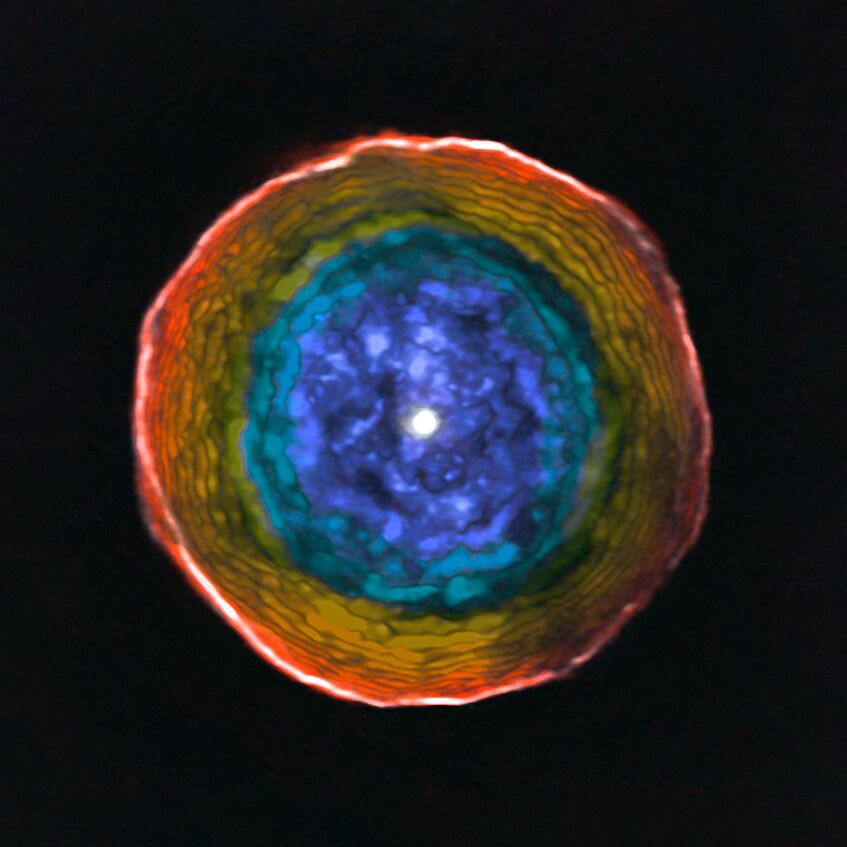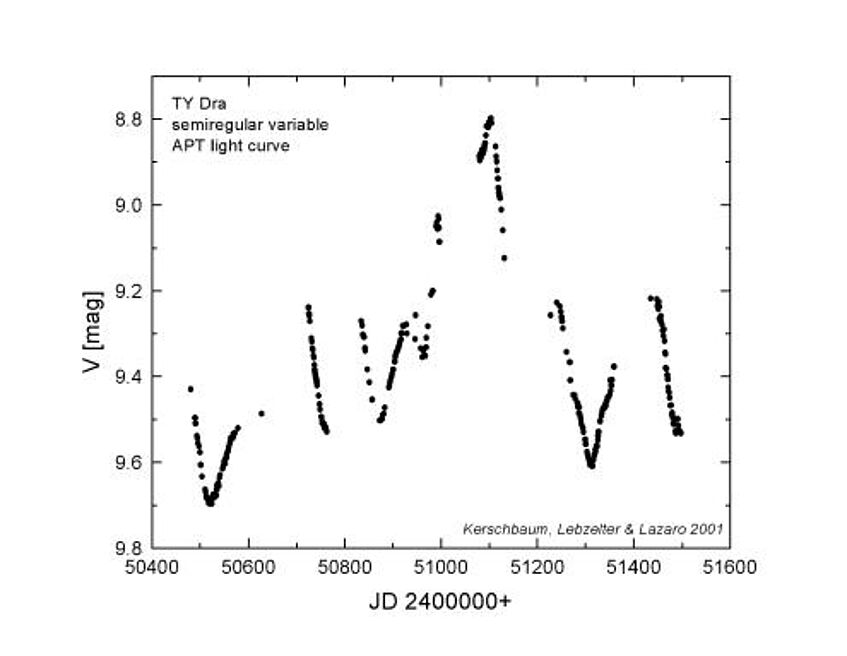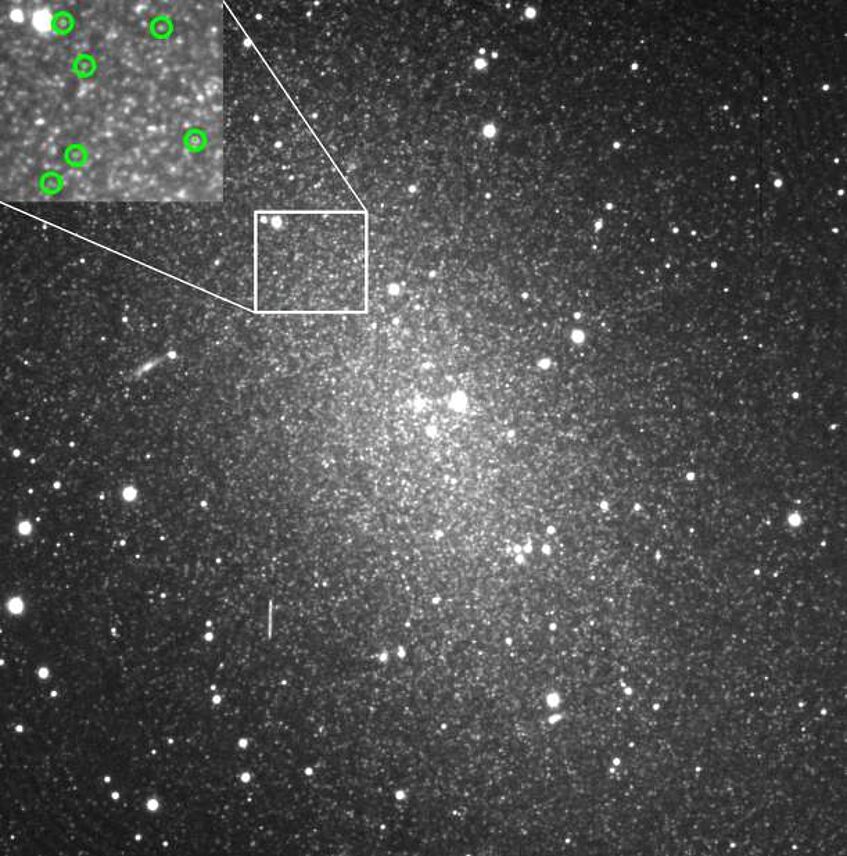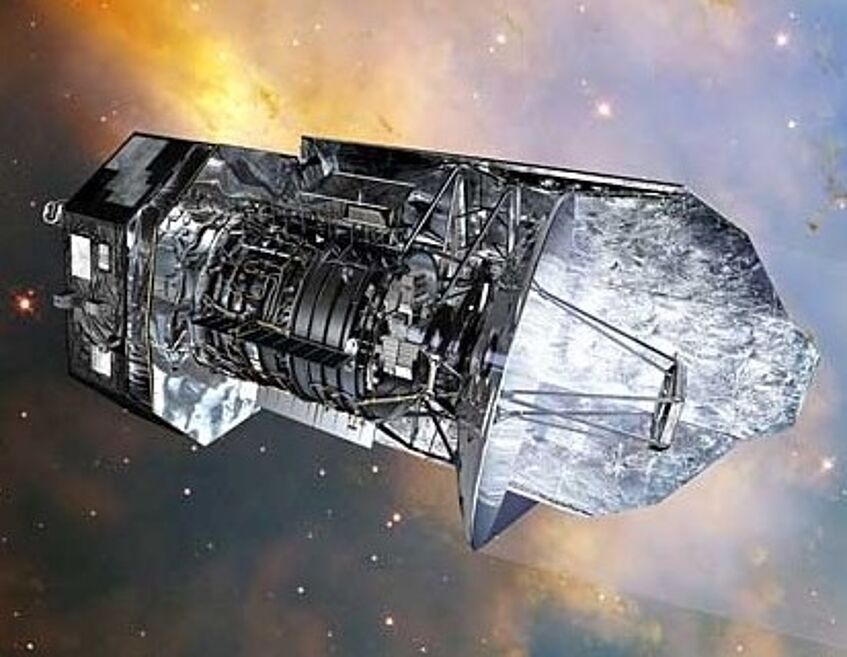Fields of research
Atmospheres of AGB stars
Atmospheres of AGB stars are one among the most complex structures. Star pulsations which cause chaotic atmospheres through shock waves coming from the center are only one factor for this phenomenon. Furthermore low temperatures lead to the formation of complex molecules and cosmic dust. These are only two reasons why not only extensive models but also observational data of different wavelengths are important for the understanding and studying of these unique atmospheres. Especially spectroscopy and interferometry from the infrared to radio wavelengths are used.

Circumstellar envelopes and dust
Reaching the end of its life a star often experiences extreme mass loss. AGB stars blow most of their envelope material into interstellar space. Heavy chemical elements produced in the star's core enrich the interstellar medium to accelerate the chemical evolution of galaxies and the whole universe. The existence of us humans is also due to this phenomenon because of the creation of most of the carbon and nitrogen in AGB stars. This high mass loss is usually followed by the formation of a white dwarf. Infrared and radio telescopes are used to study the cooling stage.
Stellar evolution and pulsation
Distinctive pulsations of AGB stars lead to strong and mostly periodic changed in their luminosities. This is why they are one of the most variable stars existing. Light curves which are analysied in our group give hinces about fundamental parameters of the stars, especially mass, evolution stage and distance. The evolution is depending on the mass of a star, AGB stars are very complex here either. Their inner structure and evolution is unique. The formation of new elements in the core, especially of carbon and elements heavier than iron, is very important for understanding this phenomenon. Investigations can be done by analysing spectra of optical and infrared wavelengths.


AGB stars in other galaxies
In this research area the membership of AGB stars in stellar populations like galaxies or clusters is analysed. Because of the high lumosity of red giant stars they can be easily observed in bigger distances like galaxies of our local group. Knowledge about the formation and evolution of local stars, the chemical composition and exact distances to these galaxies can be gained. With the help of the latest large telescopes and their sharpness of images it is possible to find the answers we are searching for.
Space instrumentation
Our team was or is part of the development of followed instruments:
- ATHENA -> Informations
- HERSCHEL -> Informations
- MATISSE -> Informations
- SAFARI -> Informations
- TIMMI-2 -> Informations


